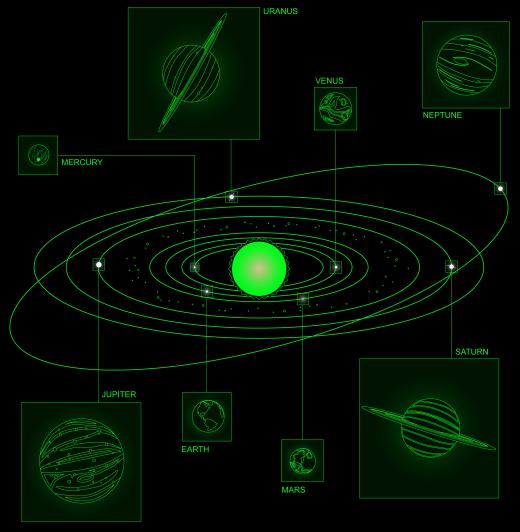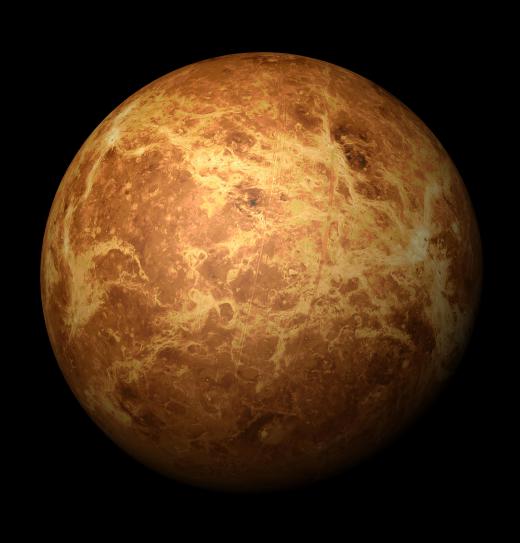What is a Morning Star?
A morning star is a celestial object, usually a planet and most likely Venus, that is seen in the eastern sky just before dawn breaks. It is often one of the brightest objects in the night sky, other than the moon, which is why it is often called the bright morning star. As such, it has not only gained a great deal of attention among astronomers but in various cultures as well.
Venus, due to its proximity to the sun and the gasses in its atmosphere, as well as its close proximity, relatively speaking, to Earth, is one of the brightest objects in the sky whenever it appears. However, due to the fact that it is a planet and on its own orbit schedule, it does not appear as frequently or as consistently in the same spot in the night sky as normal stars. Therefore, to the untrained observer, its appearance may seem random. Of course, astronomers can predict its appearance and placement, but this information may not be readily available to the casual sky viewer.

The morning star is known to be a sign of hope, that the darkness will soon give way to the light. As such, its importance as a cultural reference is often substantial, more so than its significance as a celestial object. It may not appear very often, but when it does, it is often noticed by those who happen to be awake at that time. It may even remain visible for a short period of time during the twilight of dawn.

Even the ancient civilizations looked to the morning star as a sign of significance. The Bible records, in the last chapter of Revelations, the last book of the Bible, that even Jesus referred to himself as the "bright morning star." That reference could help explain for its continued importance in terms of culture and pop culture throughout the centuries. This may also help to explain why, at least in modern times, this star symbolizes hope.

The morning star often appears low on the horizon, which makes it very hard to see except in open areas. However, some say if the sky and location are very dark, the sight is truly an impressive one. Train engineers have even said they have thought there was an oncoming train on their set of tracks, having mistaken the morning star as the head lamp of another locomotive.
AS FEATURED ON:
AS FEATURED ON:













Discussion Comments
The bible is encoded. Jesus is saying that he is in fact, Lucifer, as the brightest star in the ancient world was attributed to Xatam (Satan) the keeper of the garden of Eden. A demonic entity who the whole wide world was brainwashed to believe by the church to be overlooked by God. That's what the star in the east over Betlehem was signaling when baby Jesus was born. The start of David is a six pointed star called the HEX and it was used in the ancient world to cast spells against people. The same star appears in the 1999 movie End of Days in the first scene when the priest at the Vatican points out the star in the sky that shows a special baby girl is born. Think!
The ancient Greeks thought Venus was two separate objects and were considered a morning star and an evening star. Of course they were given names. The morning star was called Phosphoros which translates into bringer of light. And the evening star was called Hesperos which is translated into the star of the evening. It wasn't until a few hundred years later that the Greeks realized that the evening and morning stars were the same single object.
@Sierra02 - The bright object you're seeing in the night sky is planet Venus. She is also referred to as the evening star.
Unlike other planets in our solar system, Venus orbits inside the Earth's orbit. When Venus is on one side of the sun it's following the sun and will show up in our night sky just after sunset. This is the Venus evening star.
When Venus is on the other side of the sun it is leading the sun and will show up in our morning sky a few hours before sunrise.
I actually heard about a ceremony that was held by one of the native American tribes which was in celebration/appeasement of the Morning Star, and which involved human sacrifice.
It wasn't held every year, but only when the shaman thought that it was necessary and when certain things were visible in the night sky.
They would capture a young girl from another tribe and would keep her well and healthy until the time of the ceremony, when she would "become" the Morning Star and they would hold a long event, at the end of which she would be killed.
We learned about it in one of my anthropology classes, because it was an example of the clashing of native American and white settler values.
Pretty quickly, the practice was discontinued.
For the past three weeks in the Eastern sky just after dusk I've been seeing the most incredibly bright star I have ever seen. It's magnificent! It's almost as if I can just reach out and touch it. Is this Venus that shines so brightly also in the night sky?
I remember a few years ago they predicted that Venus (as the morning star) was going to be coming relatively close to the Earth and that it was worth going out to have a look at her.
I did get up early and go out to have a look and it was quite wonderful. I can see why ancient people would think it a sign of significance, particularly since it doesn't stay in the same place like the other "stars" do.
I know in literature they always refer to the morning star as a woman, and it makes me glad that they were romantic enough to name her Venus, after the goddess of love, when they discovered she was actually a planet.
Post your comments